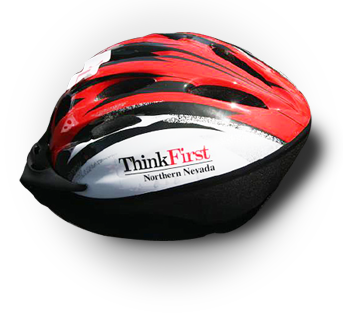
ThinkFirst for Teens Programs


Each year an estimated 500,000 persons sustain permanent brain and spinal cord injuries in the United States.
The most frequent causes of these injuries are motor vehicle crashes, violence, falls and sports and recreation, especially diving and violence.
Teens and young adults are at highest risk for these devastating injuries, the majority of which are preventable.
ThinkFirst For Teens, a program of the National Injury Prevention Foundation, is an award-winning public education effort targeting this high risk age group. Developed by America’s Neurosurgeons, it is presented at no charge in junior and senior high schools. The upbeat program educates young people about personal vulnerability and risk taking. The message is that you can have a fun, exciting life, and you can do it without hurting yourself if you think first and use your mind to protect your body.
There are four components to the ThinkFirst For Teens program: school-based education, reinforcement activities, general public education, and public policy initiatives. The major educational portion is presented in junior high and high schools, in either large assembly or classroom formats. It consists of up to four segments:
- The 15-minute film “ThinkFirst” which features honest and direct testimony from people who have sustained a serious injury, about the narrow margin separating exciting activity, and fun which results in tragedy. Blending action and music, it features the insights of dynamic teenagers with brain and spinal cord injuries.
- A discussion of the anatomy of the brain and spinal cord, how injuries to these parts of the body occur, the physical results of injury, and how many of these injuries can be prevented. It is stressed that teens are the highest risk age group for these injuries.
- A young person who has sustained a brain or spinal cord injury describes how the choices made changed his/her life since the injury. This is the key component of the program, as it shows the students that these injuries can and do happen to people just like them while engaging in typical teenage activities, but that safe choices can prevent most injuries from occurring.
- A brief discussion on proper bystander behavior at the scene of an injury resulting from, for example, a diving injury or a motor vehicle crash.
The National Office offers training to start a local chapter, information on injury prevention to the general public, and technical support to local ThinkFirst chapters operating in 47 states. The film “ThinkFirst” is available for purchase, and the newsletter PREVENTION PAGES is available at no charge by signing the Guest Book.
Comments from Teens who participated in our ThinkFirst Program
“Thanks so much for coming in Drew. I personally lead a bit of a double life, nothing serious, but after hearing your message I am trying to stop.”
“This made me rethink my choices in life and why I should think before I do anything.”
“Something I learned today is brain injuries all happen at the unexpected moments like the car crash, falling down the stairs or the dirt bike incident.”
“What I think was the most important part of this presentation was when they talked about the brain and how important it is to wear a helmet. I think that’s very important because it is such a little thing but it can save your life. Also the seatbelt. I think a lot of people these days for get about them but they can truly save your life.”
“One thing I learned and will remember is to wear proper safety gear when riding because I would ride without a helmet and stuff.”
“Thank you for coming in and talking to our class. Hearing you speak about what happened really made me think. I play softball but I also like to party and go out with friends. Hearing what happened to you made me stop and think and analyze my choices. Me dad always tells me before I go out “Think past your nose” and that always made me laugh, but hearing your story changed my ways for the better and I appreciate you doing that for me.”
“Thank you Drew, I appreciate that you came and talked to us about how drinking and doing things that make you “cool” can be very dangerous. Thank you for your speech, now I will make sure I’m safe about my decisions.”
“Thank you so much for everything. I am now going to take things more serious. I have had 4 concussions and I never took them seriously until now. Thank you very much for coming in.”
“Thank you for telling us your story. You taught me about the importance of wearing the proper safety gear when riding ATV/dirt bikes. I ride an ATV myself and I’m going to make sure I always wear approved safety equipment whenever I ride.”
Brain and Spinal Cord Injury Facts
500,000 INJURIES A YEAR
Each year an estimated 500,000 persons sustain permanent brain and spinal cord injuries in the United States.
BEST PROTECTION
Correct use of an approved helmet is the best way to protect your head and brain from sports related injuries.
DID YOU KNOW?
Approximately half of patients with a severe head injury will need surgery to remove or repair brain bleeding or bruising.
